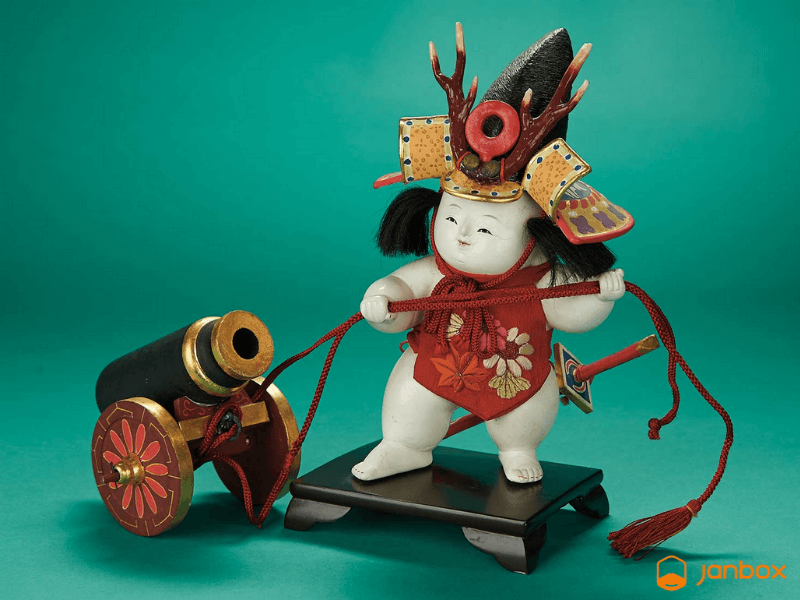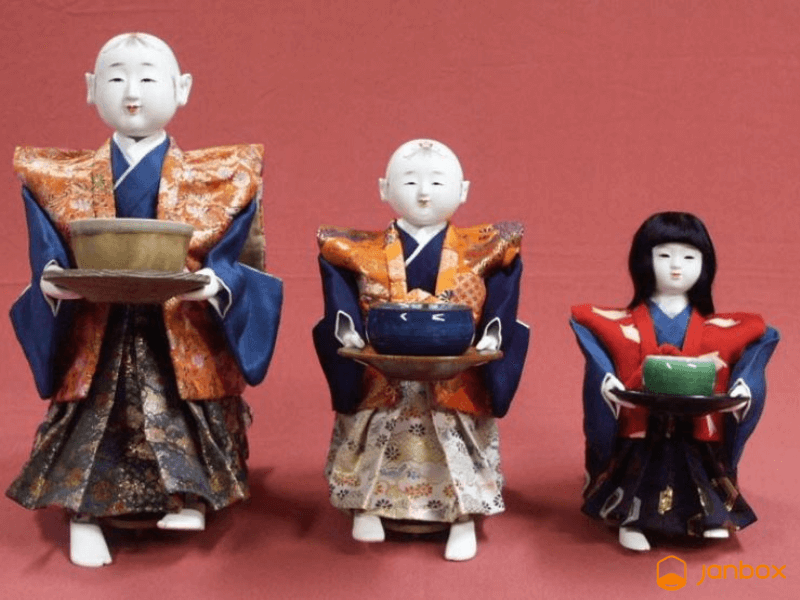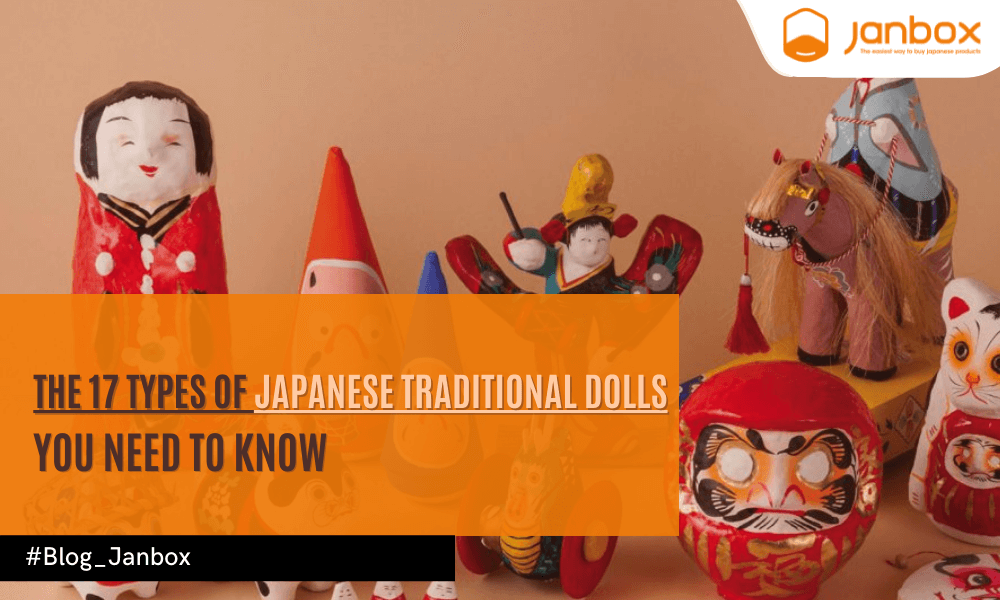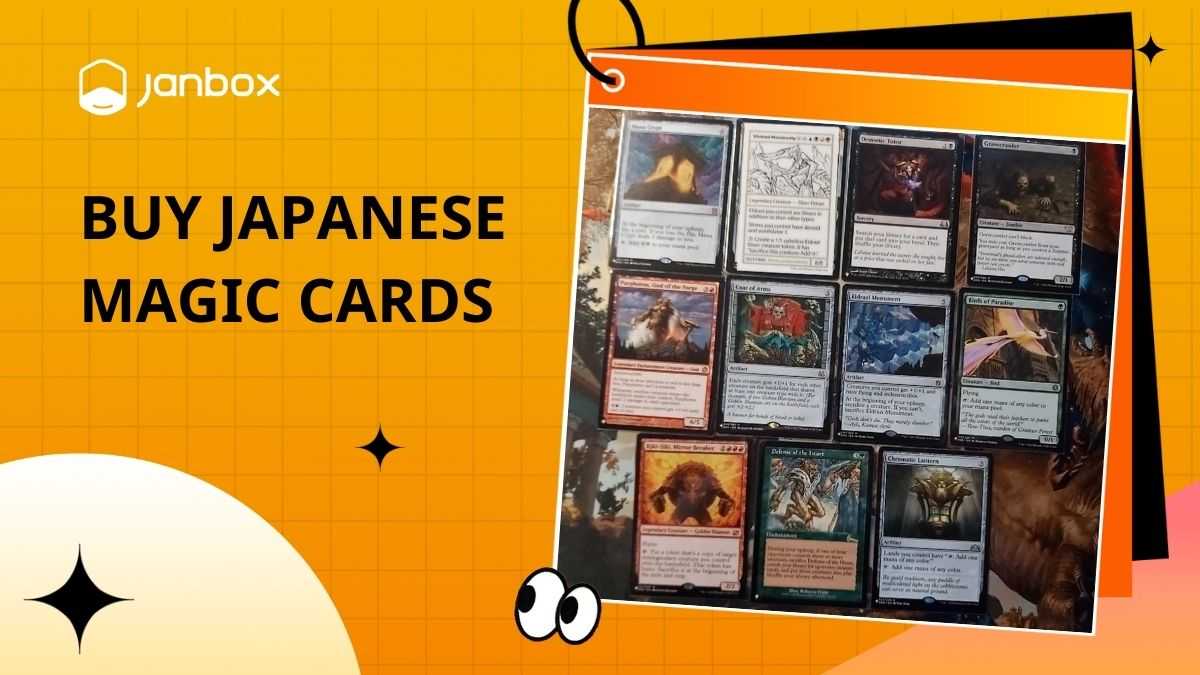Japanese dolls are the engraved inside Japanese culture and history in many fascinating ways. In Japan, dolls are usually introduced during tasks to replace or represent the person presenting them. Janbox, is one of the few companies in Japan you are the largest suppliers of these Japanese Traditional Doll or Dolls.
1. Importance of Japanese dolls in Japanese Culture
According to Japanese tradition, the doll carries a person’s Sin or evil spirits through a touch then after the doll is thrown into the water or burnt, it carries the problems with it. However, the offering doll has a short life, a brief contact with the person it represents. Dolls can be burnt to destroy one year’s sins.
The doll Daruma is purchased in the New Year and burnt at the end of the year. Daruma has the additional task of assisting the owner with crops. Heena dolls and other forms are also ceremonially lit in a temple or in temples and shrines. It can be seen as a release of the soul or spiritual power of a doll when it is not needed or needed.
There are some dolls or figures that are offered as a memorial to a dead or those who have lost their child. The Kokeshi dolls were use memorial ceremony purposes. In modern Japan, parents exist, where parents can offer a doll husband or doll bride to a dead unmarried child, calming the child’s spirit with this partner. Interestingly, the doll seems to resemble the child to the parent.
The doll is used as a commemorative gift
This is a special category, especially important in modern business. These dolls are made to give as gifts for a company to use on a special occasion. According to history, the Yamaha Company gave the dolls to its distributors in the US every year. Dolls were created specifically for this purpose and served not only as a token of the relationship, but also as part of a special advertisement and display in the showroom.

Civic Festival aims
In Japan, many localities celebrate religious tableaux, drawn by teams of men to the city. These trains often include large figures, legend, historical figures or any religious figure. While these figures are not technically dolls, their construction involves carving and combining wooden dolls with gofun skin, the same type of construction as the smaller figures displayed in the house at festivals.
>>> Read more: Buy Games From Japan | Import The Desired Ones.
Economic Purpose of Dolls
It was observed that most of the Japanese traditional doll was made by individuals, at home; however, other dolls were developed to sell as souvenirs in specific communities. So around 17th century doll making was commercialized in Kyoto (now Tokyo), and the doll became a commodity of exclusive consumption. The dolls those which were most significant were made to order for some of the very important buyers.
The forms of these dolls were specifically developed by the elite to purchase as gifts, craftsmen involved in making human figures, such as festive carriage figures, religious statues, puppets worked with wood and Gofun developed ways to do that when scaled became the basis of doll manufacturing.
Therefore, these dolls are the most important aspect in Japanese tradition and history, and Janbox is one of the emerging companies in Japan that helps international customer buy all kinds of dolls from Japan. The beauty of the company is its reputation and fantastic dedicated customer service. They supply or deliver these dolls internationally as well.
Japan is a country with an extremely diverse, rich, and sophisticated culture. Besides the art of making cakes, traditional kimonos, and tea ceremony culture, dolls are also a very unique culture. It is considered a cultural heritage that has existed for a long time and still exists today. Do you know about traditional Japanese dolls? Janbox will give you the most overview of this unique culture. Let’s find out together!
2. Purpose of use and the meaning of traditional
2.1. Religious purposes, beliefs of traditional Japanese dolls
The history of Japanese dolls dates back to the Jomon period (also known as the Japanese Neolithic period, about 14,000 BC). At this time dolls were just small clay figurines. By the kofun period (about 250 to 538 AD), the creation of statues to worship gods and Buddhas made the shape of later dolls. It is thought that they have divine power, therefore they are being used as worshiping objects and they can also ward off evil spirits. This is one of the Japanese religious cultures.
Dolls are displayed at the Hina Matsuri festival. Besides, traditional dolls are also used in religious festivals in Japan. Among these festivals are the Hina Matsuri ( 雛祭り) Japanese Doll Festival, which is dedicated to Japanese dolls. The festival has become a feature of Japanese life.
During this festival, people will make dolls out of straw and then drop them into the river. They believe that these dolls will ward off spirits, bad luck and keep their children safe. This festival has become a day of blessing, luck, and health for their daughter.
2.2. Dolls are considered a meaningful gift
On holidays, New Year or birthdays, Japanese people often give each other dolls symbolizing luck, prosperity, and dreams. They often give each other cute, small dolls named Daruma. This is a very meaningful gift.
Japanese children also love being given dolls by adults. On the 3rd of March for girls and on the 5th of May for boys, adults often give dolls to children with the meaning of protecting them. It is the gift of childhood that is imprinted in the hearts of Japanese.
Today, although the advent of Anime and Manga phenomena has attracted young people, traditional dolls still retain the cultural characteristics of Japan. It still holds a certain place in the hearts of Japanese people. And they are always the number one choice when the Japanese want to give someone a gift.
In addition to good wishes, the dolls say words of encouragement on their behalf to the person they want to give.
2.3. Dolls become an economic and commercial product for Japan
In addition to spiritual purposes and meanings, traditional Japanese dolls are becoming a highly economic product for Japanese people. Dolls are sold quite a lot at souvenir shops for domestic and foreign tourists. In addition, dolls are also popularly sold on Japanese e-commerce sites such as Amazon, Rakuten, Mercari…
For example, a Geisha doll sold on Amazon ranges from 1200 yen to 3500 yen. At different e-commerce sites, the price is different but it is not significant. In addition, with Hina dolls which have many shelves, the price is quite high. The one with 7 shelves will cost around 250,000 yen – 300,000 yen. If there are fewer shelves, the price will be cheaper.
Hina dolls are sold at a Japanese e-commerce site, they are quite expensive.
Not only domestic customers but also many foreign customers buy dolls at these e-commerce sites. This shows that traditional Japanese dolls are also a major commercial product. They are attracting many customers around the world, especially those who love to collect dolls and love the culture of the land of the rising sun.
>>> Read more: Top 10 Best Japanese Traditional Toys You Should Not Miss
3. Top 17 Types of Japanese Traditional Dolls
There are many different types of traditional Japanese dolls, here are 17 main types.
3.1. Hinamatsuri – Hina Doll
Origin of the word “Hina”

In Japanese, Hina means small. The city of Wakayama is famous for the Hina Doll Memorial Festival in Kata. At Awashima Shrine, the name of Sukuna Hikona (the inventor of sake and medicines that cure people) is worshiped as a deity. And it is said that the word Hina is derived from the word “Hikona” in “Sukuna Hikona”.
Origin of Hina Doll
The origin of Hina dolls originates from China. This is a festival held on March 3. On this day, people often make dolls to drop into the river with the meaning that they will replace children to receive the disaster and carry it into the river. Those dolls are called Hina. Hina dolls not only represent girls but also represent kings and queens and courtiers.
Types of Hina Dolls
Hina dolls are classified into 2 types, Kimekomi, and Ishochaku. Kimekomi (木目込み) is a type of doll whose clothes are made by carving or gluing fabric directly onto the doll. As for Ishochaku (衣裳着), their clothes are made individually.
Then they are put on for the doll. Moreover, dolls are also classified by quantity. There are 3 sets of Hina dolls including a set of 2 dolls, a set of 5 dolls, and a set of 7-15 dolls.
Usually, a full set of dolls includes 15 dolls and is arranged into a shelf of 7 floors.
- 1st floor includes 2 dolls: king and queen
- The 2nd floor has 3 dolls and 3 sake maids
- The 3rd floor consists of 5 dolls who are male orchestras
- 4th floor includes 2 angel dolls (Zuijin)
- The 5th floor includes 3 guardian dolls for the king and queen
- The 6th and 7th floors are used for additional decoration.
3.2 Daruma Dolls (達磨)
The Origin and History of Daruma
Daruma is known to be a good luck charm “seven falls, eight rises “. Daruma has no limbs but only a round shape. According to legend, Daruma was the third son of the king of south India. He is a very devout Buddhist. He devoted his life to spreading Buddhism in this country. He later moved to China and lived in Suzan Shorinji.
There he continued to meditate on the wall for nine years. His limbs eventually rotted. That’s why the Daruma doll is just a circle block without limbs. Since then Daruma symbolizes patience, dedication to everything.

Daruma’s color meaning
Daruma dolls are produced in different regions in Japan. And each region will have different Damura in terms of facial features.
However, they all share the same color and meaning:
- Meaning of Red Daruma: Amulet. Red daruma symbolizes good luck, is a talisman to prevent diseases and calamities.
- Meaning of White Daruma: It is said that the white Damura brings good luck to fulfill their wishes. In addition, white Damura strengthens other colored Damuras. So they are often decorated as a set.
- The meaning of yellow daruma: increased fortune. Golden Daruma brings wishes: prosperity and fortune. It is also considered a talisman for a bountiful harvest.
- Meaning of Black Daruma: Business Prosperity Black Damura means prosperous business, many advantages. For office workers, it’s like a talisman to pray for career success.
- Meaning of Blue Daruma: Health Prayer Blue Damura means wishing good health. If you are given a green Daruma by someone, it means that person wants you to live healthy forever.
- Meaning of Pink Daruma: Pink Daruma is said to bring good luck in marriage and love will have many advantages. So a lot of young women in Japan like this pink Daruma.
Daruma has many different colors
Damura carries a lot of meanings. So Japanese people often give each other gifts on birthdays, weddings, grand openings… They hope that the Damura will bring luck, happiness, and peace to their relatives and friends.
3.3. Kyoto Dolls

Kyoto doll (京都) also known as Kyo Ningy is one of the traditional Japanese dolls. This name comes from the fact that they are made around the city of Kyoto in Kyoto Prefecture. They are created from the subtlety, meticulousness, and care of the artisans with techniques passed down from generation to generation.
Kyoto Dolls require the sophistication and meticulousness of artisans
To make a Kyoto doll requires a skillful combination of artisans. Each person will be in charge of crafting apart and then combining them into one. This creates the value of the Kyoto doll. That value lies in the carefulness and meticulousness of the artisans. They are very passionate about creating the soul of Kyoto.
3.4. Kokeshi Dolls

Kokeshi dolls (こけし) were born in the mountainous hot spring areas of the Tohoku region after the mid-Edo period. The Kijiji (carpenter) used wood and lathe to create Kokeshi dolls to give to tourists.
Kokeshi are dolls that have only a head and body without limbs. They are turned by artisans with the head and body separate, then glued together and covered with glossy paint. Kokeshi was originally just a gift meant to pray for the health of the children. Later, they also mean that they can ward off evil spirits and prevent fires.
Kokeshi Dolls just has a body without leg and arm
3.5. Kimekomi Dolls
The Kimekomi doll is said to have been created around 1740 by a craftsman named Tadashige Takahashi. He used pieces of willow wood to make dolls. These dolls were originally called Kamo. And then they changed their name to Kimekomi.
Kimekomi is very popular in Japan. The distinguishing feature of this type of doll is their cuteness and cuteness. Each face is hand-painted, and each doll has a different look. Because of their compact size, they are often put together in sets. Kimekomi symbolizes smallness, cuteness, and cuteness. This is also the symbol of the ancient Japanese woman. They are very gentle and shy in traditional kimonos.
>>> Read more: What is a Maneki Neko? Everything you need to know
3.6. Gosho Dolls

Gosho (御所) dolls are made from land or willow tree trunks. They are mainly shaped like a baby boy. In the Edo era, it was called the white chrysanthemum doll. In the Meiji period, it was called Gosho. Gosho dolls were the symbol of chubby, adorable babies born in the palace.
Therefore, they are used as gifts on the occasion of weddings or childbirth with the meaning of wishing the children to be healthy and peaceful.
3.7. Karakuri Dolls

Karakuri are dolls modeled and designed according to traditional Japanese mechanical equipment. In kanji, it is written as Karakuri with the meaning of ingenuity. Karakuri is the creation of art combined with machines through the precise assembly of internal parts.
According to ancient records, the Karakuri is the “southern chariot” found in the 4th year of the emperor Saimei. Karakuri consists of a doll made of wood and stands on a base with wheels on the bottom. This doll always faces the south no matter which direction the wheels below roll.
Traditionally, karakuri dolls have 3 types: teahouse karakuri dolls, festival karakuri dolls and stage karakuri dolls. It can be said that Karakuri dolls are the premise for creating robots later.
3.8. Oiran Dolls

The oiran doll recreates the image of real-life Oirans – high-class courtesans in Japan during the Edo period. Orian dolls have a very attractive shape. It can be said that Oiran are the most beautiful dolls in Japan. The artisans have paid great attention to details such as hair, costumes, and other details with accessories included. Each Oiran doll is a character with its own soul and class like the real Oiran themselves.
3.9. Geisha Dolls
Similar to Oiran, geisha dolls represent real-life Geishas. Geisha are women trained to sing, dance, and play musical instruments for the parties of the elite. Unlike Oiran, geisha only sell turmeric, not their bodies. Therefore, Geisha dolls are not as glamorous as Orian.
However, Geisha still have an eye-catching appearance in colorful kimonos with musical instruments in their hands.

>>> Read more: How To Buy From Mercari Japan with Janbox Proxy Service
3.10. Gogatsu Dolls
This is a doll for boys. They are arranged on the altar on May 5 with the meaning of wishing the children good health and peace. According to the tradition of old samurai families, when each child is born, their parents will wear helmets and decorate the Gogatsu dolls in front of the house to bless them. The form of Gogatsu is the athletes or warriors who wear armor and majesty. Japanese people display Gogastu to protect their sons and wish them well.
3.11. Bunraku Puppets
Bunraku (文楽) also known as Ningyō jōruri is a puppet in a genre of traditional Japanese puppet theater. They originated in Osaka in the 1680s. Bunraku puppets are made of wood and range in height from 0.75 to 1.2m.
They are carved very delicately and meticulously and must be made by experienced artisans. Because they are characters in puppet plays, each Bunraku doll has different shapes. However, they all have eye-catching shapes and are very vibrant when they move.

3.12. Okiagari Koboshi Dolls
Appeared in the 14th century, Okiagari Koboshi dolls are round, fat dolls made from paper mache. They are also known as roly-poly. The structure of the Okiagari Koboshi doll is similar to that of Damura. And they are also considered amulets that bring good luck, peace, and no disease.
3.13. Hakata Dolls
Hakata doll (博多人形) is one of the traditional Japanese dolls. They are produced around the city of Fukuoka. This is a city famous for its doll making since the 17th century. Hakata is made of clay. They were used as offerings to Buddhist temples and festivals or as gifts to rulers at the time.
Today, Hakata come in a variety of styles and colors. They have become symbols of the city of Fukuoka. According to the artisans, the Hakata is modeled after historical figures, religious figures, or samurai warriors… Hakata is not only a decorative item, but it also carries a unique cultural significance of Japan
3.14. Iki Ningyo Dolls
Iki Ningyo (生人形) dolls are life-sized dolls.They were often displayed in Misemono exhibitions in the Edo period. Artisans create them based on historical figures, gods. Nowadays, when mentioning the name Iki Ningyo, people will think of mannequins in the store.
3.15. Ichimatsu Dolls
The Ichimatsu doll is also one of the traditional Japanese dolls. However, unlike other types of dolls, Ichimatsu dolls are often associated with horror stories even though they have lovely, round faces. Usually, they are dressed in brightly colored kimonos and have an okappa hairstyle – a hairstyle commonly seen in girls.

According to some old documents, this type of doll is named after Sanogawa Ichimatsu – a very famous Kabuki actor in the 18th century. He was an actor who specialized in female roles. Besides, this doll is called Ichimatsu because this was a popular name for children in the Edo period.
There are many scary stories associated with Ichimatsu dolls, but this is completely untrue. Those are just superstitious stories and Ichiamatsu dolls are still a precious cultural heritage and lovely home decor items.
3.16. Tezu Tezu Bozu
Tezu Tezu Bozu (てるてる坊主) doll is a small doll made of paper or cloth. They are often hung in long rows in front of a window or porch. This doll is considered a talisman capable of bringing good weather as desired. “Teru” in Japanese means sunny, and “bouzu” means priest.
Tezu Tezu Bozu has been popular since the Edo period. Children often make small dolls with their own hands to pray for good weather for the next day. Nowadays, before camping or traveling, children often hang Tezu Tezu Bozu in front of their house to pray for warm weather. If someone hangs this doll upside down, it means they are praying for rain.
3.17. Kintaro Dolls
Kintaro Doll (金太郎, often translated as “Golden Boy”). This is a heroic figure in Japanese folklore. Kiranto is a symbol of strength, courage and brings good luck. On May 5, boys are often given kintaro with the meaning of wishing them a healthy, brave body, fearless.
4. Dolls in Today’s Japan
Nowadays, the Japanese youth no longer love traditional dolls as in the past. Instead, they prefer figurines. Even, they are willing to spend a big amount of money to own them. These mini-dolls are often modeled after anime characters. They are sold on Japanese e-commerce sites but most are limited edition.
A lot of young people around the world try to buy this limited edition by all means. That’s the answer to how Japanese dolls are extremely attractive. They are not only ordinary dolls, but they also have the soul and culture of the Japanese people
>>> Read more: The best Japanese proxy buying service
Conclusion
Above is some basic information about traditional Japanese dolls. Hopefully, everyone will have a certain understanding of the cultural heritage of Japan. If you want to own one of these dolls, you can buy them directly at souvenir shops in Japan. Or you can also buy at Japanese e-commerce websites like Amazon, Rakuten, Yahoo! Auctions, Mercari… These websites are all linked on our website – Janbox.com. You can also search for them right here. Let’s try it together!
Email: [email protected]
Facebook: https://www.facebook.com/janbox.com.en










